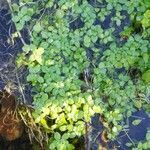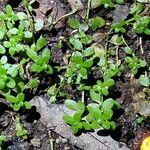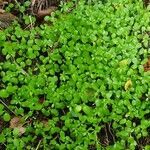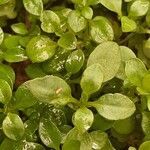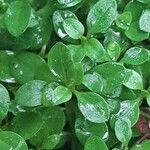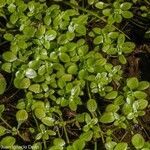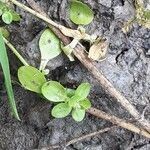Stems slender, up to 3 dm. or more long in water, sparingly branched; shorter on mud. Lowest lvs about linear to narrow-lanceolate, ± retuse. Mid-lvs on short petioles; lamina thin, ± 4-10 × 2-4 mm., about spathulate, rounded to emarginate. Uppermost lvs c. 5-15 × 2-5 mm. or more, forming floating rosettes, obovate-to spathulate-oblong, on petioles c. 3 mm. long. ♂ in upper, ♀ in lower axils; bracts falcate, persistent. Fr. suborbicular, c. 1·5-1·6 mm. diam., pale; wing distinctly narrower than cell; commissural groove deep; seeds pale.
A small plant that grows in water. The branches are delicate and 10-20 cm long. The leaves are of 2 forms. The leaves under the water are narrow and 1 cm long by 1-2 mm wide. The floating leaves are 8 mm long by 5 mm wide. The flowers are small and naked. Male and female flowers are separate on the same plant. The fruit are nut-like. They separate into 4 winged, 1-seeded segments.
Fr suborbicular, 1.5–2 mm long and wide, the carpels distinctly wing-margined their whole length; 2n=10; otherwise much like no. 3 [Callitriche palustris L.]. In cold ponds and streams; native of Europe, intr. at scattered stations in our range and elsewhere in n. U.S. and s. Can.
